As part of the 60th anniversary of no-till’s first commercial acres in 1962, No-Till Farmer updated its No-Till Legends list following the 30th anniversary of the National No-Tillage Conference in Louisville, Ky. This roster of “No-Till Legends” includes outstanding growers, educators and suppliers who have played a key role in the growth of no-till from 0 to 110 million acres in 6 decades.
No-Till Legends is brought to you by Unverferth Mfg.
Unverferth Mfg. is a leading manufacturer and marketer of tillage equipment, pull-type sprayers, fertilizer applicators, hay and grain handling equipment, and agricultural dual and specialty wheels. The family-owned atmosphere, which promotes pride in product quality and value, is as prevalent today as it was in 1948.
Click any of the names below to jump to a specific bio, or scroll through the following presentation.
Want Monthly Advice From Veteran No-Tillers and Conservation Expert
Achieve Bigger Yields and Profits with a Subscription to No-Till Farmer Magazine!
Subscribe to No-Till Farmer magazine today with a complete 100% money-back guarantee and discover the hard-earned secrets thousands of no-tillers have discovered that have improved their bottom-line profitability and efficiency. Subscribe here »
List of No-Till Legends
The original list honoring the outstanding growers, educators and suppliers who played a key role in advancing the no-till practice was released in 2011 and was last updated in 2017. The list appeared in From Maverick to Mainstream: A History of No-Till Farming.
As we took inventory of the many legends, it became apparent that several influencers outside North America also played a critical role in no-till’s acceptance around the world. As a result, the list includes 11 worldwide no-till legends involved in the no-till movement.
Hailing from 18 states and 2 Canadian provinces, the North American “No-Till Legends” as well as a separate roster of the “International Legends,” with representation from 7 other nations. Together, this list honors 60 individuals who have played a major role in the adoption and growth of no-till.
More names will be added to the “Legends of No-Till” list upon additional milestones and anniversaries. You’re invited to offer your comments and suggestions in the “Post a Comment” box at the end.
(*denotes deceased)
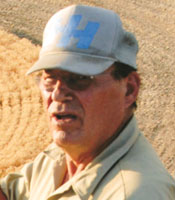
John Aeschliman
Colfax, Wash.
John was among the no-till pioneers in the Palouse area of eastern Washington and a founding member of the Pacific Northwest Direct Seed Association in 2000. No-tilling some of the steepest hills found anywhere in the country. Aeschliman and his son run a 4,000-acre operation that’s been 100% no-tilled since the mid-1970s. They no-till winter wheat, spring wheat and spring barley in 7 1/2-inch paired rows and also no-till corn, peas, sunflowers, garbanzo beans and cover crops in a 100% continuous no-till system. Aeschliman is a major proponent of the need for no-till to protect topsoil from erosion, having distributed photos of Palouse-area roads covered with topsoil washed from conventionally tilled fields to prove his point. He’s also discouraged the burning of residue in no-till systems. On visits to his farm, I’ve walked up no-tilled slopes so steep you think you’re about to fall and tumble headfirst down the hill.
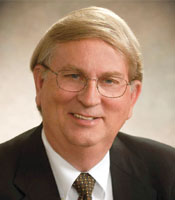
Roy Applequist
Salina, Kan.
Establishing Great Plains Mfg. Co. in 1976, Applequist was among several shortline farm equipment manufacturers in the early 1980s that saw the need for designing equipment specifically for the no-till market. The company was an active participant in Tennessee’s Milan No-Till Field Days, where several manufacturers introduced narrow-row prototype drills designed specifically for no-till conditions. Since those early days, Great Plains has become a leader in developing specialized seeding equipment for the no-till market. The started-from-scratch company that sold in 2016 to Kubota for $430 million was the result of a brand name made famous through the design and manufacture of specialized equipment in the no-till and conservation tillage world.
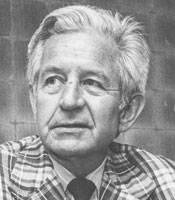
Keith Barrons*
Midland, Mich.
Keith was the manager of ag chemical development at Dow Chemical Co. and was among several Dow scientists who worked on the development of no-till techniques in 1951. In some of their early herbicide work in no-till, these researchers needed as much as 6 pounds of atrazine per acre to combat weeds. Over the years at Michigan State University and later at Dow, Barrons authored more than 100 technical papers and books on ag developments, including research results dealing with effective herbicide use in no-till systems.
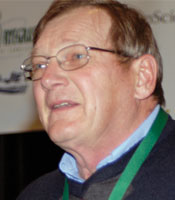
Dwayne Beck
Pierre, S.D.
The South Dakota State University agronomist and manager of the farmer-owned Dakota Lakes Research Farm has produced some of the most practical no-till research found anywhere in the world. Big on introducing additional crops into long-term no-till rotations, Beck is a strong advocate for using cover crops with no-till. He has shown the importance of seeding a diversified assortment of cover crops and has been a strong advocate for keeping something green and growing on the soil surface every month of the year. Beck is an unusual researcher that understands the need for providing no-tillers with highly practical and profitable ideas they can put to immediate use. A speaker at the first National No-Tillage Conference in Indianapolis in 1993, I still remember Duane saying: “You folks in the eastern Corn Belt no-till to get rid of the water. In South Dakota, we no-till to capture every raindrop we can.”
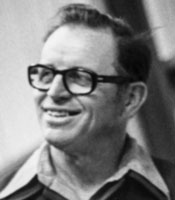
Ernie Behn*
Boone, Iowa
Among the early adapters of ridge-till, Boone frequently spoke to numerous farm groups on the benefits of the practice. He wrote a practical guide to ridge-till success entitled, More Profit with Less Tillage.
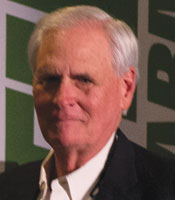
John Bradley
Lutts, Tenn.
A long-time University of Tennessee agronomist, Bradley served for 14 years as head of the University of Tennessee’s Milan Ag Experiment Station. He directed the annual mid-summer Milan No-Till Field Day that attracted tens of thousands of growers to see the latest innovations in no-till research. Among the pioneers working with no-till cotton, he has shown thousands of growers how to earn large payoffs with a wide variety of no-tilled crops. He later worked as a no-till educator with Monsanto.
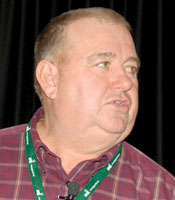
David Brandt*
Carroll, Ohio
Brandt began farming in 1971 and has seeded numerous cover-crop mixtures on his 1,150-acre corn, soybean and wheat operation since 1978. He’s a huge booster of the tremendous value of cover crops in improving soil health. Brandt is a frequent speaker at many no-till events, including several National No-Tillage Conferences, where he always shares a wealth of practical and low-input cost ideas used on his own farm to increase no-till profitability.
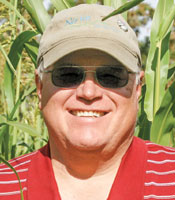
Gabe Brown
Bismarck, N.D.
The Brown family operates a highly diversified 5,000-acre operation that focuses on holistically integrating livestock grazing and no-till systems. This includes cash crops, multi-species cover crops and the production of all-natural grass-fed beef, poultry and lamb. Relying extensively on no-tilling, Brown’s system has regenerated the natural resources on the ranch without extensive use of synthetic fertilizers, herbicides, insecticides or fungicides.
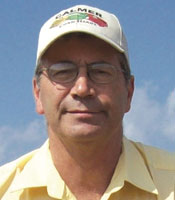
Marion Calmer
Alpha, Ill.
The owner of the Calmer Ag Research Center has conducted hundreds of onfarm practical research projects covering all aspects of crop production for nearly three decades. A firm believer in field-sized replicated research, his plots run the entire length of fields in widths that match his no-till planter, drill and combine. His mid-summer tours and winter meetings are jam-packed with practical results that always include plenty of down-home advice to help growers no-till more effectively while pushing up profits. Much of his research has centered on ways to make the most effective use of fertilizers, reduce seeding rates, planter modifications, combine adjustments and narrow-row corn. A popular speaker at many no-till events, Calmer led the charge toward 15-inch rows in no-till corn, engineering and marketing corn heads for narrower rows. He’s also developed crushing and chopping stalk rollers that aid in the decomposition of Bt corn-stalk residue in no-tilled corn.
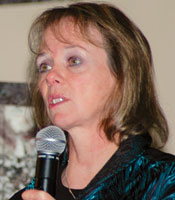
Jill Clapperton
Spokane, Wash.
Showing growers how to benefit from the amazing millions of critters living beneath the soil surface, Clapperton says no-till has evolved to where it not only improves soil structure and stops erosion but also is having a far-reaching impact on consumer food preferences and human health. An internationally known soil health specialist and soil ecologist, Clapperton analyzes the relationships between organisms and their environments to more effectively manage and benefit from the long-term biological fertility of our soils. Among only a handful of soil ecology scientists in the world, she is known as a rhizosphere ecologist and is a popular speaker at no-till events, including the National No-Tillage Conference. Previously working with Agriculture and Agri-Food Canada at Lethbridge, Alberta, Clapperton now operates Earthspirit Land Resource Consulting.
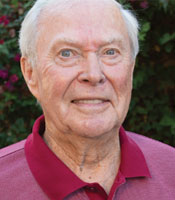
Jim Cook
Pullman, Wash.
Cook earned an international reputation as a leading plant pathologist at Washington State University when he demonstrated to Pacific Northwest no-tillers why expanding crop rotations could effectively fight many troublesome disease concerns. Cook discovered how soil borne pathogens were attacking no-till wheat roots and how naturally occurring microorganisms could battle disease. He started promoting no-till wheat to growers in the Palouse corner of Washington, Oregon and Idaho in the early 1990s to save time, fuel and soil while capturing more water. Cook pioneered the research that led to the “green bridge” breakthrough that was holding back the growth of no-till in many areas of the world.
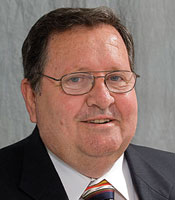
Elbert Dickey*
Lincoln, Neb.
This University of Nebraska educator pioneered many of the early day water-saving techniques used with no-till by western Corn Belt growers. He was known in the 1980s for his extensive knowledge on how no-till planter adjustments and modifications could lead to improved crop stands and seeding efficiencies
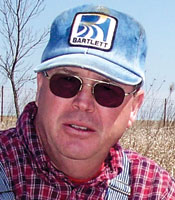
David Dukes
Bedford, Iowa
A long-time no-tiller in southwest Iowa, Dukes demonstrated the benefits of no-tilling when bringing land out of the Conservation Reserve Program. He is an active promoter of no-till and soil stewardship in livestock operations.
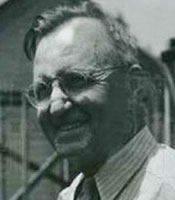
Edward Faulkner*
Elyria, Ohio
This county ag agent became an author in 1943 when he published Plowman’s Folly, a revelation based on understanding and appreciating the value of reducing soil disturbance. His famous quotation is as true today as it was in 1943, "No one has ever advanced a scientific reason for plowing.”
NO-TILL'S 25 LIVING LEGENDS VIDEO
No-Till Farmer editor Frank Lessiter honored 25 individuals at the 25th annual National No-Tillage Conference in North America back in 2017 for the key role they played in the increased adoption of no-till and additional conservation practices.
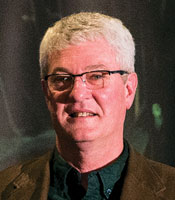
Barry Fisher
Indianapolis, Ind.
State agronomist for the Natural Resource Conservation Service in the Hoosier state before being named one of the agency’s regional soil health specialists, Fisher has been a long-time booster of no-till. His efforts helped Indiana’s no-till acres grow to the point where it is among the states with the highest percentage of no-till acres in the U.S. Fisher has devoted much of his government career to encouraging the adoption of no-till and cover crops. Over the years, he’s worked with thousands of farmers while conducting numerous field days and has worked with numerous no-till equipment options to demonstrate what makes the most sense when it comes to no-till.
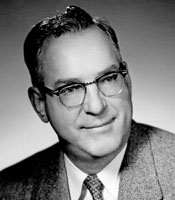
Leonard Fleischer*
Columbus, Neb.
Among the pioneers of ridge-till, Fleischer developed and marketed the leading line of ridge-till equipment under the Fleischer Mfg. brand. The company also sponsored the National Ridge-Till Conference for several years, which was the leading educational event for this reduced tillage system.
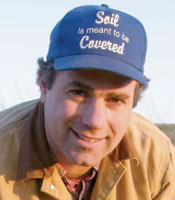
Steve Groff
Holtwood, Pa.
Among the world’s leaders on adapting no-till for vegetable production, Groff has hosted numerous field days that have brought thousands of growers and ag leaders to his highly specialized cropping operation. A cover crop enthusiast, Groff has helped thousands of growers improve the health of their soils with cover crops while promoting the concept that “Soil is meant to be covered.” Having successfully no-tilled tomatoes, sweet corn, pumpkins, corn, alfalfa, soybeans, wheat and cover crops for nearly four decades, Groff is known for the introduction of the tillage radish as a cover crop and has demonstrated its ability to scavenge nutrients, reduce weed pressure, trim compaction and boost soil quality.
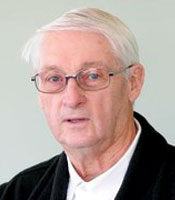
Jim Halford
Indian Head, Saskatchewan
No-tilling since 1979, Halford developed the Conserva Pak seeding system that was sold in 2007 to John Deere. Instrumental in the organization of the Saskatchewan Soil Conservation Association, Halford has relied on low-disturbance cropping systems to curb erosion concerns.
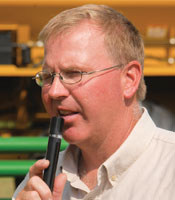
David Hula
Charles City, Va.
A multi-generational no-tiller, the family operation where no-till has been used since the late 1960s is known for its record-breaking corn yields. These include harvesting 542 bushels per acre from an irrigated no-till field in 2017 that represents the highest no-till yield ever reported in the National Corn Growers Assn. competition. Subsequently, he's used strip-tilling to achieve even loftier heights, including the 2019-set record of 616 bushels per acre. Many of his ideas have dramatically boosted yields for thousands of no-tillers across the country. Located along the James River, the family’s farm is near the Jamestown settlement, which was the first permanent British settlement in the Americas back in 1607. Along with all the early American history to see in the area, a visit to the Hula operation is not complete without touring the farm’s ag museum put together by David’s father.
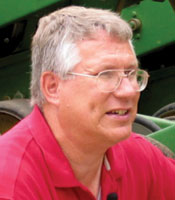
Paul Jasa
Lincoln, Neb.
An ag engineer at the University of Nebraska, Jasa’s first experience with no-till occurred when he evaluated the planter usage of 150 growers. After nearly four decades of continuous no-till research, Jasa has helped producers recognize the immense value of following a total no-till system approach. This has included developing a long-term no-till plan to rebuild the soil structure, no-tilling every acre every year, utilizing a diverse no-till rotation, properly managing residue and placing nutrients where crop roots will find them. He’s always been a hands-on educator in demonstrating to growers how to make the necessary adjustments with no-till planters, drills or air seeders for slicing through residue, getting uniform seed depth and obtaining effective seed-to-soil contact. Jasa championed the value of no-tilling for erosion control, higher yields, less cost and water-conservation benefits long before many other university educators.
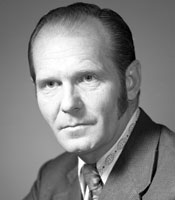
George Kapusta*
Carbondale, Ill.
The long-time weed scientist at Southern Illinois University was among the early advocates of no-till and is recognized worldwide for his influence in developing no-till weed control strategies, such as early preplant herbicide applications for corn and soybeans. His efforts have led to the successful adoption of no-tillage weed management in corn, soybeans and grain sorghum. In 1970, he initiated a tillage-fertility study that now is one of the longest comparisons of tillage systems in the U.S. He earned a reputation as an educator with over 50 M.S. and Ph.D. students. Kapusta also started and served as the Superintendent of the Belleville Research Center and sponsored an annual research “Field Day” that provided growers from throughout the U.S. and other countries with practical herbicide answers to handle weed concerns specific to no-till.
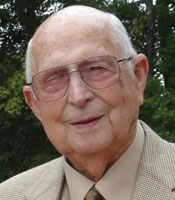
Eugene Keeton*
Clarksville, Tenn.
A farmer turned inventor, Keeton came up with innovative planter ideas from his Kentucky farm shop that were later adapted by Kinze and John Deere. He invented the Keeton seed firmer to improve no-till seed-to-soil contact, as well as the finger pickup corn meter and the brush meter for soybeans.
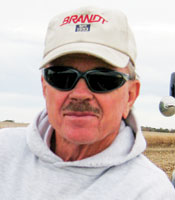
Jim Kinsella
Lexington, Ill.
A long-time no-till and strip-till enthusiast, Kinsella demonstrated how these two reduced tillage practices save time and money while having a positive impact on the environment. No-tilling soybeans and strip-tilling corn on 2,200 acres, he and his son have seen a dramatic increase in soil quality and reduction in costs while pushing up yields. In earlier days, Kinsella worked closely with BASF and several other ag chemical companies to promote no-till. He built an onfarm meeting center to host hundreds of growers at winter meetings and summer field days. Kinsella is recognized among the leaders in the development of strip-till.
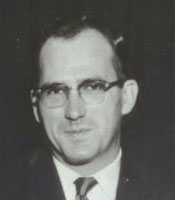
Ellery Knake*
Urbana, Ill.
The University of Illinois weed scientist saw major no-till benefits before many other agronomists and developed extensive herbicide tankmix recommendations to control weeds in no-tilled corn and soybeans. Much of Knake’s early research dealing with weed competition pioneered the establishment of thresholds for several annual grass and broadleaf weed species and provided economic justification for using soil-residual herbicides.
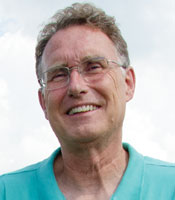
Hans Kok
Carmel, Ind.
Kok’s 40-plus years as an extension worker, no-till specialist for a leading pesticide supplier and as a crop consultant helped producers adopt no-till. He continues to consult with numerous ag groups and growers on reduced tillage practices and the many benefits of seeding cover crops in today’s most efficient cropping systems.
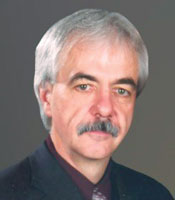
Guy Lafond
Indian Head, Saskatchewan
The no-till researcher with Agriculture and Agri-Food Canada at Saskatchewan’s Indian Head Research Farm developed innovative no-till systems for dryland agriculture. Besides evaluating the environmental benefits of no-till in regard to crop production, soil quality and air quality, Lafond’s research focused on nitrogen application guidelines using optical sensors to increase nutrient efficiency.
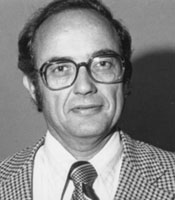
Bill Lewis
Raleigh, N.C.
The North Carolina State University weed scientist became the go-to guy in the 1970s for southeastern growers who sought practical advice on all aspects of no-tilling, long before most other educators were on the no-till bandwagon.
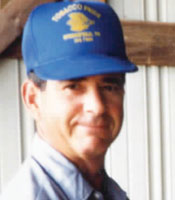
Howard Martin
Elkton, Ky.
Martin started no-tilling to earn a decent living from poor-quality land and later developed specialized no-till equipment that led to the formation of Martin Industries. The development of row cleaners, fertilizer openers, closing wheels, gauge wheels and other no-till row-unit attachments has come from a humble one-person farm shop beginning to a highly successful manufacturing company with more than 40 employees that’s a leader in the no-till planter and drill accessory market.
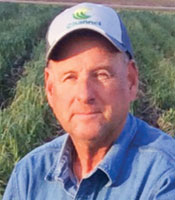
Jeff Martin
Mount Pulaski, Ill.
No-tilling since 1982, Martin has dramatically expanded the family operation and for nearly two decades has been strip-tilling continuous corn on much of the farm’s 5,000-plus acres. Based on extensive soil testing and plant analysis, the family has cut back sharply on nitrogen applications with corn while producing yields of over 250 bushels per acre. By paying close attention to details, Martin maintains both no-till and strip-till systems have the potential for higher yields and profits with either rotated or continuous corn than any other tillage system. Martin also played a key role in convincing absentee landowners to allow their ground to be no-tilled.
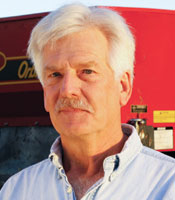
Ray McCormick
Vincennes, Ind.
A no-tiller for more than 30 years in a 3,200-acre operation, McCormick believes nothing pays bigger dividends than investing in conservation. When he talks diversification, it means raising peaches for the fresh market, no-tilling corn, wheat, both full-season and double-cropped soybeans and cover crops, along with managing 1,000 acres of woodlands and wetlands for waterfowl and whitetail deer hunting. Recognizing the nutrient and soil protection value, McCormick says he would not sell residue from his no-till fields even if someone offered $100 per ton.
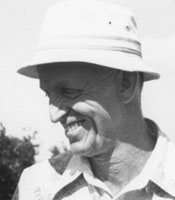
Jim McCutcheon*
Homewood, Manitoba
McCutcheon was among the first growers in western Canada to give no-till a try and found low-cost ways to adapt existing equipment for no-till. He was a founder and past president of the Manitoba-North Dakota Zero Tillage Farmers Association.
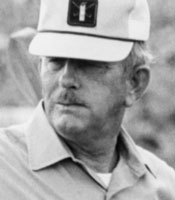
George McKibben*
Simpson, Ill.
The agronomist with the University of Illinois at the Dixon Springs Agricultural Center introduced some of the earliest no-till plots in the states. McKibben’s annual summer field days featured hundreds of amazing tankmix concoctions being evaluated for effective no-till weed control. His 1961 work on no-tilling corn into fescue sod led to the first field-scale introduction of no-till a year later in southwestern Kentucky.
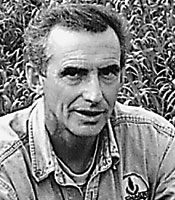
Bob McNabb
Minnedosa, Manitoba
No-tilling since 1978 with a wide variety of cereals, pulse crops and forages, McNabb also worked with several groups to introduce no-till to small-acreage farmers in Zimbabwe. McNabb was also among the pioneers who started the Manitoba-North Dakota Zero Tillage Farmers Association and served as president of the group.
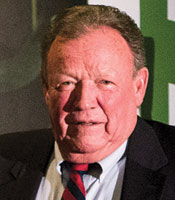
John McNabb*
Inkom, Idaho
Having no-tilled as many as 43,000 acres in a single year, McNabb and his family are a shining example of how no-till can maximize profits while successfully no-tilling poor-quality soils on steep slopes that otherwise could not be farmed in southern Idaho and northern Utah. Following a winter and spring wheat rotation, no-till has enabled McNabb to get along with half the number of tractors, one-fourth of the labor and enjoy dramatic drops in fuel and herbicide costs compared to conventional tillage. His bottom line indicates no-till over the years has returned an extra $35-$40 per acre.
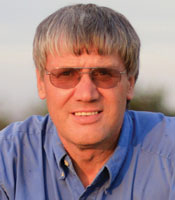
Phil Needham
Calhoun, Ky.
Born and raised in the United Kingdom, Needham came to the states to show American wheat growers how to dramatically boost wheat yields by adopting the intensive British small grain system. Working on this project, the British-trained agronomist soon learned about no-till and its drawbacks due to a lack of needed equipment modifications. From that experience, he launched Needham Ag Technologies and has built a career around the need to effectively adjust and modify planters, drills, combines and sprayers for peak performance under no-till’s heavy residue situations. Numerous equipment design modifications seen over the past several decades have resulted from Needham’s ideas.
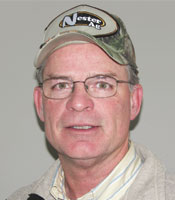
Joe Nester
Bryan, Ohio
Working as a crop consultant with no-tillers in northwestern Ohio, Nester has demonstrated how no-till can return an extra $40-$50 profit per acre. His work with no-till started in the late 1980s and over the next few years, Nester bought ten 750 John Deere no-till drills and rented them to growers. Within a few years, most of his clients switched from 100% conventionally tilled soybeans to nearly 100% no-tilled soybeans. Nester has also worked on the algae concerns in Lake Erie due to the over application of phosphorus. He’s been a trendsetter in helping no-tillers reduce costly soil and nutrient runoff while turning out high yields with less fertilizer.
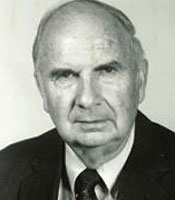
Shirley Phillips*
Lexington, Ky.
The University of Kentucky agronomist and Extension administrator was one of the fathers of the no-till movement. He worked closely with Harry Young to put out the very first onfarm no-tillage corn crop in 1962. In 1973, Phillips and Young co-authored the 224-page No-Tillage Farming book, which was the first practical guide to this new reduced tillage concept.
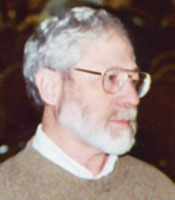
Mike Plumer*
Creal Springs, Ill.
The long-time University of Illinois Extension educator in southern Illinois relied on no-till to pump up profits on his own farm. Plumer was a big believer in relying on cover crops to dramatically improve soil quality and no-till income. After retiring as a university educator, he consulted with growers and suppliers on finding new cover crop solutions, making more effective use of no-till and improving soil health.
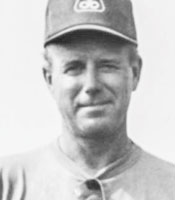
Ray Rawson*
Farwell, Mich.
The “father of zone tillage,” Rawson and his sons run a large-acreage operation that features no-till corn and soybeans. He spent several years promoting the zone-till system at hundreds of meetings across the Corn Belt and working one-on-one with growers. Several today’s reduced tillage tools got their start in the Rawson farm shop. At one time he designed and built a new no-till planter every winter in his farm shop that featured his latest innovative ideas.
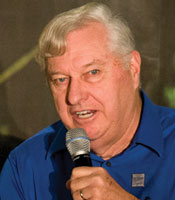
Randall Reeder
Hillard, Ohio
Reeder spent 32 years as an extension agricultural engineer at Ohio State University. He placed considerable emphasis on developing systems to reduce tillage and soil compaction while promoting cover crops, soil quality, controlled traffic and machine-soil interactions in increasing cropping efficiencies. Among the leading research and education advocates for conservation tillage and no-till, Reeder has served many years as the leader of Ohio’s highly popular Conservation Tillage Conference that is held each winter.
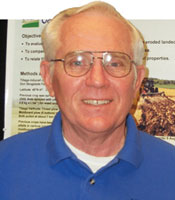
Don Reicosky
Morris, Minn.
He spent much of his career as a soil scientist with USDA-ARS evaluating the connection between reduced tillage practices and soil health. His ground-breaking work on tillage-induced carbon dioxide loss, carbon sequestration and other issues made him a worldwide authority. Reicosky’s 40 years of research confirmed the need for reduced tillage practices and continuing attention to soil quality and environmental conservation.
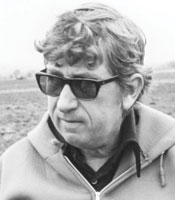
Bill Richards
Circleville, Ohio
Known as the godfather of no-till and among the early adopters of the practice in southern Ohio, no-till enabled the Richards family to grow to more than 3,000 acres — a move that completely changed his life. Early on, he saw the value of utilizing wider equipment to run tires in permanent wheel tracks to reduce compaction and no-till 31 rows of 20-inch corn in the days when most growers thought narrower rows meant a 30-inch spacing. While Richard’s contributions to the no-till movement started on the home farm, he later had a tremendous impact on the growth of no-tillage while serving as chief of the Soil Conservation Service in Washington, D.C. In this position, he convinced many government officials and farmers that no-till was here to stay and could make the environment better for everyone. Early on, Richards recognized and promoted the major economic benefits of no-till by reducing costly field trips.
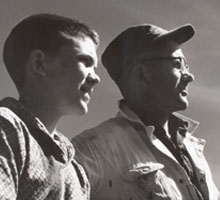
Mort* & Guy Swanson
Palouse, Wash.
The father-son team developed the Yielder drill for extremely dry Pacific Northwest slopes and engineered specialized openers, spraying equipment and fertilizer applicators in the family’s farm shop. The Swansons demonstrated how specialized equipment could seed numerous no-till crops in continuous no-till on the steep hills of the Palouse while sharply reducing erosion. Their highly specialized, extremely heavyweight Yielder drills were used to no-till a variety of grain, pulse and forage crops while dramatically reducing soil erosion. Guy Swanson has continued to help no-tillers earn higher profits by developing the highly efficient Exactrix Global Systems fertilizer application system and other no-till innovations that has allowed growers to trim nutrient rates. A true farm shop innovator and well ahead of his time in the no-till world, I met Mort Swanson on the first no-till tour held in Hawaii in 1973.
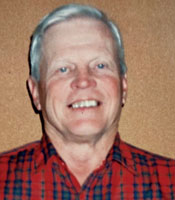
Grant Thomas
Lexington, Ky.
The University of Kentucky agronomist specialized in soil chemistry and international agricultural development. He helped introduce no-till to several Argentinean growers.
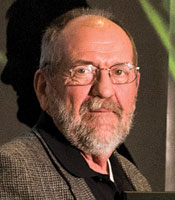
Dan Towery
Lafayette, Ind.
A Natural Resources Conservation Service educator in Illinois, Towery quickly recognized the benefits of no-till. Later as a Conservation Technology Information Center staffer, he supervised the annual tillage practices survey that was conducted nationwide for years. He has been instrumental in the promotion and recent growth of cover crops, particularly annual ryegrass. Working as a consultant to government agencies, growers, farm groups and suppliers, Towery has played a critical role in the expansion of cover crops across the nation, especially within the no-till ranks.
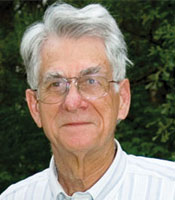
Glover Triplett
Starkville, Miss.
Triplett did some of the early research on no-till as an Ohio State University weed scientist in the early 1960s. He also started the longest on-going no-till research plots in the world at Ohio State’s Wooster facility. These extensive plots have produced valuable no-till data for more than 55 years with over 75 scientific papers having been published by educators based on results from these plots. After retiring from Ohio State, Triplett has enjoyed a part-time career as a plant and soil agronomist with Mississippi State University. Over many years, he showed farmers how to use no-till to convert severely nutrient- and soil-depleted fields back into highly productive cropland.
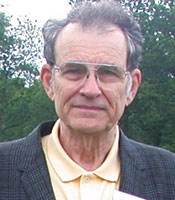
Dave Van Doren*
Medina, Ohio
The Ohio State University soil physicist worked closely with Glover Triplett on introducing no-till to the Eastern Corn Belt. Van Doren carried out pioneering research on determining which soil types were most adaptable for no-tilling.
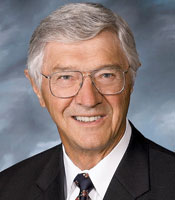
Ray Ward
Kearney, Neb.
This soil scientist recognized the need for evaluating no-till fertility recommendations in a different way than was the case at most soil testing facilities. He runs Ward Laboratories, a soil-testing lab that treats no-till soil test results in innovative ways, such as measuring microbial life and soil biological health.
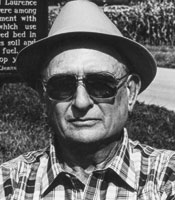
Harry Young Jr.*
Herndon, Ky.
Young started the onfarm no-till movement in 1962 on 0.7 acres of the family farm now operated by his son, John, and grandson, Alexander. That field has been continuously no-tilled for more than 55 years. Young saw the merits of no-tilling corn plus wheat with double-cropped soybeans in a rotation that allowed the family to harvest three cash crops in 2 years from the same ground. Along with University of Kentucky agronomist Shirley Phillips, Young co-authored the 224-page No-Tillage Farming book in 1973, which was the first practical guide to this reduced-tillage practice.
Meet 16 of the World’s Top No-Till Influencers
Since No-Till Farmer got its start in 1972, numerous growers and educators in other countries have also played key roles in the growth and acceptance of no-till in many areas of the world outside North America
Here’s our list of 16 “No-Till Legends” from other countries around the world.
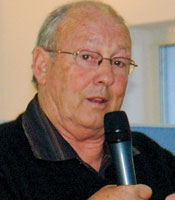
John Baker
Feilding, New Zealand
The long-time no-tillage researcher at the University of Massey has published more than 80 international papers on the science of no-till machinery and its interaction with the soil. Baker developed the cross-slot technology that’s now used in many areas of the world. Baker is convinced the science and practice of no-till has passed the “point of no return.” He believes no-till is within sight of becoming the most common system on the planet for seeding arable crops.
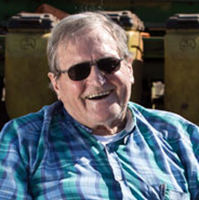
Herbert Bartz*
Rolandia, Parana, Brazil
Bartz was among the first growers to pioneer no-till in Latin America and has used it continuously since starting to no-till soybeans in 1972. A past president of the Brazilian Conservation Agricultural Federation, he’s been a popular speaker on his no-till experiences over the past five decades.
Photo courtesy of Sergio Ranalli.
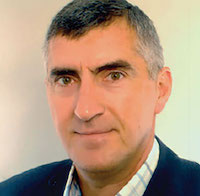
Gottlieb Basch
Gottlieb Basch, Portugal
Gottlieb Basch holds a doctorate degree in agricultural sciences from Georg-August-University in Göttingen, Germany. In 1984, his thesis compared the use of no-till and diversified crop rotations with the conventional tillage systems used in the south of Portugal. Based on the promising results, Basch has spent four decades researching how environmental, agronomic, soil health, biodiversity, carbon sequestration, greenhouse gas emissions reduction and economic situations in CA systems compare with conventional tillage systems. Since 1991, Basch has been a member of the Institute of Mediterranean Agricultural and Environmental Sciences at the University of Évora in Portugal working on soil conservation and soil carbon dynamics. He is the author or co-author of more than 40 research papers in international journals and several book chapters.
Photo courtesy of Sergio Ranalli.
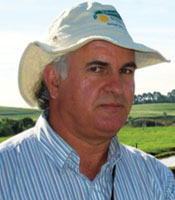
Ademir Calegari
Lundrina, Parana, Brazil
With over 35 years of experience with no-till, Calegari maintains Brazil’s success with no-till is due to the effective selection of cover crops to suppress diseases and increase profitability. The soil scientist has encouraged and helped growers in numerous countries around the world shift to no-till and sustainable soil management.
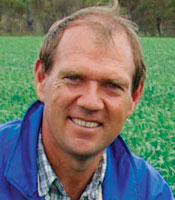
Bill Crabtree
Morawa, Western Australia
Having researched and helped expand no-till growth for more than 30 years, Crabtree is well respected for his no-till work throughout the world. Known as “No-Till Bill” in his native land, he has shown the ability to consistently think outside the box in finding new ways for making no-till work. Crabtree has devoted much of his career to expanding the no-tilled acres in Australia and has worked with many of the country’s no-till pioneers. Besides consulting around the world on no-till, Crabtree now practices what he preaches with the purchase of 7,500 acres near the edge of the desert in the western area of Australia. Some 95% of his cropping program includes no-tilling continuous wheat, but he also no-tills canola, triticale and lupins.
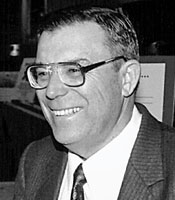
Carlos Crovetto*
Concepcion, Chile
Crovetto made no-till work on otherwise unproductive soils on steep slopes and has worked since 1985 to promote no-till in many areas of the world. The founder and president of the Soil Conservation Society of Chile, Crovetto highlighted years of no-till experience in his book, Stubble Over the Soil. He was also a popular speaker at several of our National No-Tillage Conferences.
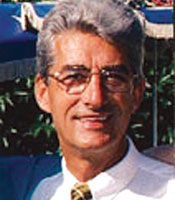
Rolf Derpsch
Asuncion, Paraguay
Derpsch has researched no-till in South America since 1971. Derpsch worked for the German Agency for Technical Cooperation for 35 years before becoming a no-till consultant. He has worked on no-till projects in numerous countries, has been recognized with several international awards for helping develop innovative no-till systems and has spoken at numerous no-till meetings, including several National No-Tillage Conferences.
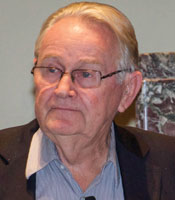
Franke Dijkstra
Ponta Grossa, Brazil
Dijkstra started no-tilling in 1976 to control erosion and improve soil quality. Always willing to share his no-till experiences, Dijkstra maintains a rotation of 50% corn and 50% soybeans with summer crops, along with winter crops that include barley and annual ryegrass as a cover crop. Before no-till, he struggled with sandy soils, sloping terrains, excessive tillage and frequent downpours that caused serious wind and water erosion. This became more serious each year from the 1950s to the 1970s. No-tilling corn and soybeans as early as possible offers 15-40 additional days to no-till a second summer crop of corn or soybeans. In many fields, Dijkstra grows three crops in a year’s time. Between 1997 and 2010, his corn and soybean yields doubled or tripled with no-till. The farm also includes a 1,000-cow dairy herd and a large farrow-to-finish hog operation.
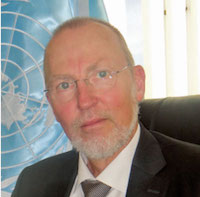
Theodor Friedrich
Bolivia
An agricultural engineer working in international agricultural development for more than 3 decades in more than 75 countries, Theodor Friedrich’s first experience with no-till equipment came with cotton in Nicaragua in the early 1990s. Since the mid-1990s, he has been involved in the creation and promotion of no-till and CA throughout the world from Bolivia, where reduced tillage is helping curb erosion in dryland areas where soil losses have reached as high as 220 tons per acre each year. Now retired, Friedrich served as a senior officer of the Food and Agriculture Organization (FAO), was a founding member of the group’s CA working group, and represented the United Nations in Cuba and Bolivia with agricultural assignments.
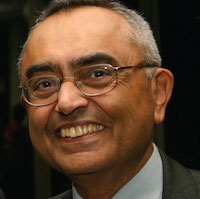
Amir Kassam
United Kingdom
Born in Tanzania, Amir Kassam received his bachelor’s degree in agriculture and a doctorate in agroecology from the University of Reading in England and a master’s degree in irrigation from the University of California-Davis. He is an internationally recognized scientist who has held leadership positions with several national and international agricultural development and research institutions around the world. The author of numerous publications and books on sustainable agriculture, he has published extensively on the merits of conservation agriculture. Kassam serves as the moderator of the Global Platform for the No-Till Conservation Agriculture Community of Practice, which is hosted by the United Nations FAO group.
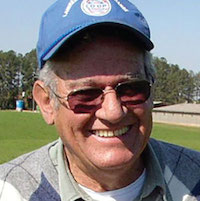
Manoel Henrique Nonô Pereira*
Brazil
In 1976, Nonô Pereira helped establish 50 acres of no-tilled soybeans at a demonstration farm in Brazil. Based on the success of that experience, he never stopped no-tilling. He organized hundreds of lectures and field visits that showed why no-till provides a solid basis for achieving sustainable agriculture. Although the knowledge, dissemination and acceptance of no-tillage had help from countless people and institutions in different places and times, Nonô Pereira played a key role in its worldwide adoption. He was always willing to share his on-farm experiences with farmers, researchers and technical assistants in numerous countries. As a founder and four-time president of the first major no-till group in Brazil, he also served as the president of the American Confederation of Sustainable Agriculture Farmers’ Associations.
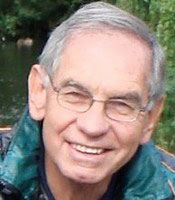
Brian Oldrieve
Westgate, Harare, Zimbabwe
With over 30 years of experience with no-till in Africa, Oldrieve has demonstrated to small-acreage African farmers how to produce substantial yield increases with no-till cereal and legume rotations. He has established several highly successful programs to spread the no-till message across Africa.
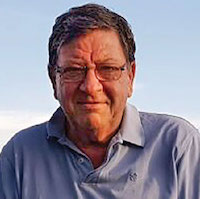
Roberto Peiretti
Argentina
A fourth-generation farmer, Roberto Peiretti no-tills corn, soybeans, wheat, barley, oats, sorghum and sunflowers on 20,000 acres in Argentina with up to 35% of the acreage double-cropped each year. Trained as an agronomist, Peiretti has worked internationally and continues to advise, design and monitor the implementation of CA and no-till on 25,000 acres in other areas of Argentina and Uruguay.
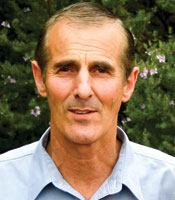
Allen Postlethwaite
Esperance, Western Australia
Having successfully no-tilled a dozen crops, he and his family have no-tilled 6,000 acres in a 16-inch rainfall zone since 1984. Postlethwaite has developed a successful no-till system while eliminating summerfallow that has dramatically improved the environment. He has hosted numerous no-till field days and tours to encourage farmers to switch to no-till. Combining controlled traffic with no-till provided Postlethwaite with a much better way to better manage extremely limited amounts of water.
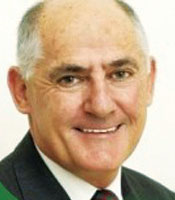
Steven Powles
Perth, Australia
Powles is considered an international authority on all aspects of herbicide resistance — from a basic biochemical understanding of how plants evolve with resistance to practical onfarm weed control strategies. Powles is a big believer in no-till while stressing the need for growers to diversify their weed control tactics.
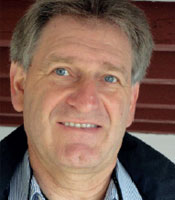
Wolfgang Sturny
Berne, Switzerland
His long-term no-till trials were built around several diversified cropping rotations, and he successfully developed no-till despite serious soil-fertility worries among many European growers. Sturny’s collection of intensive agronomic and economic data has led to greater acceptance of no-till in many areas of Europe.



Post a comment
Report Abusive Comment